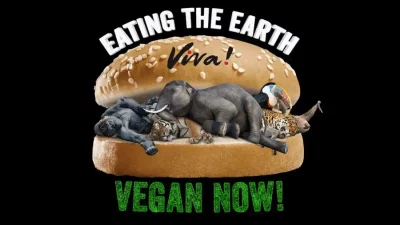Nature-positive

The only way forward
One million species are at risk of extinction and to stop this, we need to know what’s driving the destruction. This study reveals that the biggest direct driver of declining global wildlife is the conversion of natural forests and grasslands into intensive agriculture and livestock farming. The second biggest driver was the exploitation of wildlife through fishing, logging, hunting and wildlife trade, with pollution ranking third.
Perhaps surprisingly, climate change ranks as only the fourth largest driver on land at the moment. In the oceans, the biggest driver of biodiversity loss is direct exploitation from overfishing and bycatch.
As Viva! has always said, this research shows that tackling climate change alone will not be enough to stop the catastrophic decline of the world’s biodiversity and with it our future. Stopping global biodiversity loss requires policies and actions that tackle all the major drivers, not just some of them.
Co-author Professor Andy Purvis says: “If future generations are going to have the same birthright we had, of a liveable, supportive planet, then all parts of society will have to transition as quickly as possible to being both net zero and nature-positive.”
Jaureguiberry P, Titeux N, Wiemers M et al. 2022. The direct drivers of recent global anthropogenic biodiversity loss. Science Advances. 8 (45) eabm9982.





